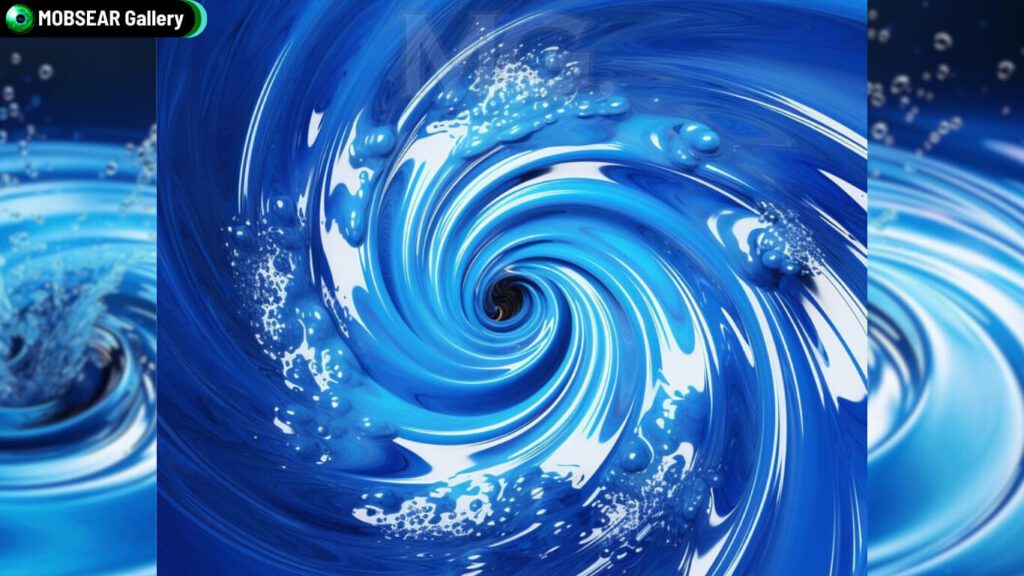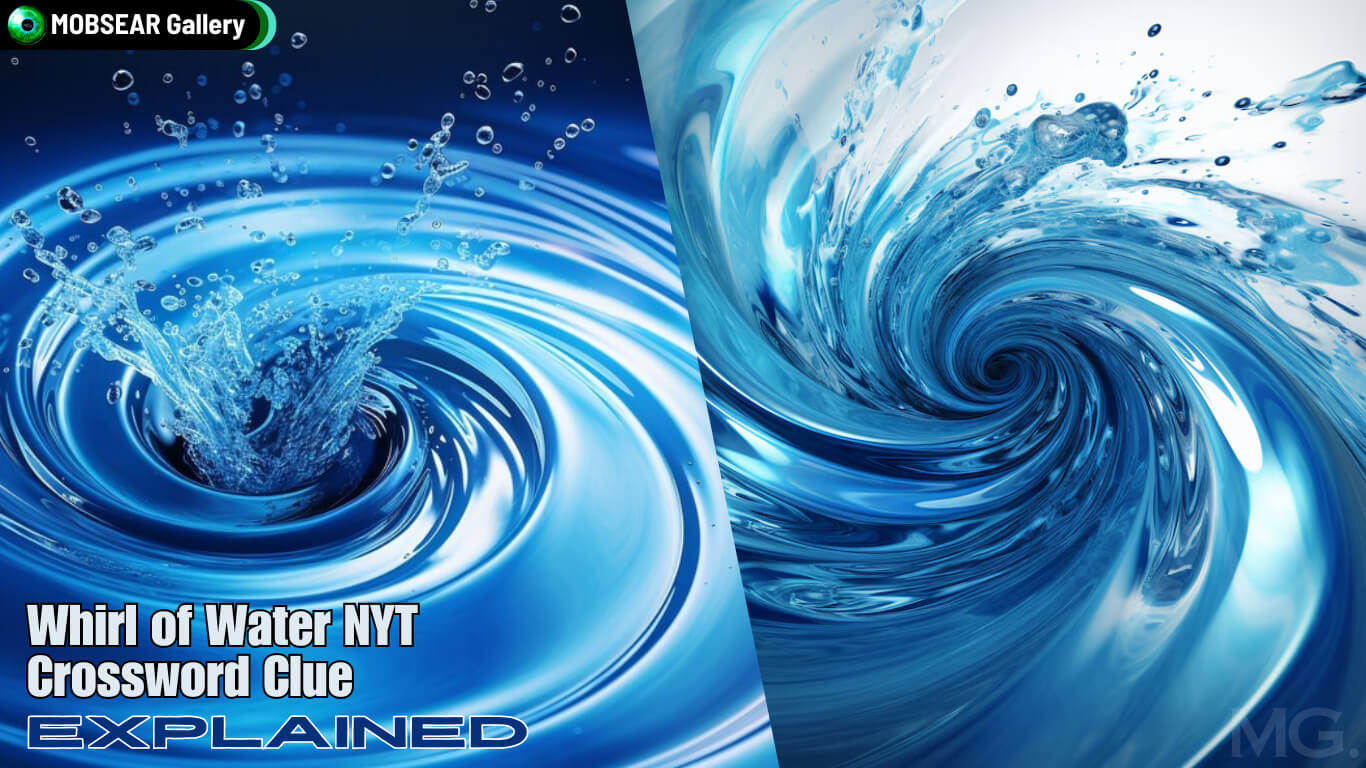Have you ever been stumped by a cryptic crossword clue in the New York Times (NYT)? You’re not alone! The world of crossword puzzles is filled with wordplay, double meanings, and sometimes, seemingly impossible answers. Today, we delve into one such clue – “Whirl of Water NYT.”
This seemingly straightforward phrase can have multiple interpretations depending on the context of the crossword puzzle. We’ll explore the most likely answers, delve into the fascinating world of water phenomena, and even spark your imagination by exploring ways to create your own “whirl of water” at home!
Now, welcome to the captivating world of whirlpools, those mesmerizing and sometimes menacing spirals of water that have intrigued humans for centuries. If you’ve ever encountered a whirlpool in nature or through media like The New York Times (Whirl of Water NYT Crossword), you might have wondered about the forces behind these swirling phenomena. This article will delve into the science, legends, and real-life whirlpools that have captured our imagination, offering an informative and engaging exploration of this natural wonder.
What is a Whirlpool?
A whirlpool is a body of rotating water produced by opposing currents or a current running into an obstacle. Whirlpools can vary significantly in size and strength, from small eddies in a river to massive vortexes in the ocean. The most intense whirlpools, sometimes called maelstroms, can be dangerous, creating powerful vortices that are challenging to navigate.
The Science Behind Whirlpools
At the heart of a whirlpool is a vortex, which is essentially a spinning, often turbulent flow of fluid. The formation of a vortex involves the interplay of various physical forces:
- Centripetal Force: This inward force is crucial in maintaining the circular motion of the water.
- Coriolis Effect: On a larger scale, such as in oceans, the Coriolis effect due to Earth’s rotation can influence the direction and intensity of whirlpools.
- Hydrodynamics: The interaction of water currents, obstacles (like rocks or piers), and water levels all contribute to the creation of whirlpools.
In simple terms, when water flows encounter obstacles or meet opposing currents, they can begin to spin and create a whirlpool. The water in the center of the whirlpool is often calm, surrounded by faster-moving water.
The Secret Mystery Revealed: Possible Answers for “Whirl of Water NYT”
The answer to “whirl of water” in the NYT crossword could depend on the number of letters the answer requires and the surrounding clues. Here are some possibilities:
- Whirlpool (6 letters): This is the most likely answer, as it directly describes a swirling body of water. Whirlpools are often found in oceans, rivers, and even bathtubs!
- Eddy (4 letters): An eddy is a smaller, localized current that spins within a larger body of water. Obstacles or changes in water flow can cause it.
- Maelstrom (8 letters): A maelstrom is a powerful whirlpool, often associated with dangerous currents and folklore.
- Vortex (6 letters): This is a more general term for a swirling motion, not necessarily referring to water. However, it could be a valid answer depending on the crossword context.
Famous Whirlpools Around the World
1. Saltstraumen, Norway:
Saltstraumen is considered one of the strongest whirlpools in the world. Located near the Arctic Circle, it is formed by the tidal current flowing through a narrow strait. The water can reach speeds of up to 25 mph, creating a dramatic and powerful whirlpool that attracts adventurers and scientists alike.
2. Maelstrom of Moskstraumen, Norway:
The word “maelstrom” originates from this famous whirlpool. Located off the Lofoten Islands, this powerful maelstrom has been mythologized in literature and legend. The complex interaction of tides and ocean currents causes it.
3. Corryvreckan Whirlpool, Scotland:
Situated between the islands of Jura and Scarba, Corryvreckan is the third-largest whirlpool in the world. It is so powerful that it creates a standing wave and an audible roar that can be heard miles away.
4. Old Sow Whirlpool, USA/Canada:
Located between Deer Island, New Brunswick, and Eastport, Maine, the Old Sow Whirlpool is the largest in the Western Hemisphere. It can create dangerous conditions for vessels passing through.
5. Naruto Whirlpools, Japan:
The Naruto Whirlpools are located in the Naruto Strait, which separates the Japanese islands of Awaji and Shikoku. These whirlpools are a popular tourist attraction, drawing visitors who come to witness the dramatic swirls created by the fast-moving tidal currents. The whirlpools can reach diameters of up to 20 meters.
Beyond the Crossword: Exploring the Fascinating The ‘Whirl of Water NYT’
Whirlpools are captivating natural phenomena. Here’s a deeper dive into their formation:
- Ocean Whirlpools: These powerful whirlpools are often caused by a combination of factors like tides, currents, and underwater topography. They can be incredibly dangerous for ships and other vessels.
- River Whirlpools: River currents can create whirlpools around obstacles like rocks or bends in the river. While not as powerful as ocean whirlpools, they can still pose a threat to swimmers.
- Bathtub Whirlpools: Yes, even your bathtub can create a miniature “whirl of water” as the water drains! This is caused by the Coriolis effect, which influences the direction of rotating fluids on Earth.
| Read more NYT Crossword articles on MOBSEAR Gallery. |
Whirlpools in Culture and Literature
Whirlpools have fascinated scientists and captured the imaginations of writers and artists. The New York Times (NYT) and other prominent media outlets often feature stories about these natural phenomena, blending scientific explanations with cultural intrigue.
Mythology and Legends
- Charybdis: In Greek mythology, Charybdis was a sea monster whose mouth formed a deadly whirlpool, threatening sailors in the Strait of Messina. This mythological whirlpool symbolizes the perilous and unpredictable nature of the sea.
- Norse Mythology: Norse legends often speak of maelstroms, reflecting the treacherous waters off the Norwegian coast. The powerful whirlpools were considered gateways to other realms or omens of the gods.
Whirlpools in Literature
- “Moby Dick” by Herman Melville: Melville describes the fearsome power of whirlpools, emphasizing the dangers they pose to sailors.
- “The Maelstrom” by Edgar Allan Poe: Poe’s short story vividly captures the terrifying experience of being caught in a massive whirlpool, illustrating the awe and fear these natural phenomena can inspire.
Creating Your Whirl of Water: Fun and Educational Activities
Sparked by the concept of “Whirl of water NYT,” here are some engaging activities to explore water movement and create your miniature whirlpools:
- Sink Experiment: Fill a sink with water and stir it vigorously in one direction. Observe how the water creates a small whirlpool in the center.
- Bottle Vortex: Fill a plastic bottle about ¾ full with water. Add a few drops of food coloring for visual interest. Swirl the bottle horizontally and then quickly stop. Observe the water continues to swirl for a few seconds, creating a miniature vortex.
- Toilet Paper Roll Experiment: Cut a toilet paper roll in half lengthwise. Hold it vertically under running water and observe how the water swirls around the roll. You can experiment with different shapes and sizes to see how they affect the water flow.
✮ Safety Note: Always ensure adult supervision for young children near water sources when conducting water experiments.
Practical Considerations: Navigating Whirlpools
While whirlpools can be beautiful and fascinating, they can also be dangerous. Here are some practical tips for those who might encounter whirlpools during water activities:
Boaters and Mariners
- Stay Informed: Always check local tide charts and weather forecasts. Areas known for strong whirlpools often have specific warnings or advisories.
- Safe Distance: Maintain a safe distance from known whirlpools. The outer edges can still exert strong forces that might pull small boats or swimmers toward the vortex.
- Avoidance: If you find yourself approaching a whirlpool, try to steer clear by moving at a tangent to the outer edge rather than directly away from it, as the current might pull you back in.
Kayakers and Swimmers
- Know the Waters: Before venturing into unfamiliar waters, research the area to understand any potential hazards, including whirlpools.
- Buddy System: Never kayak or swim alone in areas prone to strong currents or whirlpools. Having a partner can provide extra safety and assistance if needed.
- Emergency Plan: Have a plan in place for what to do if you get caught in a whirlpool. Remain calm, conserve energy, and try to swim perpendicular to the current.
Environmental Impact of Whirlpools
Whirlpools, while primarily natural phenomena, can also play a role in local ecosystems. They can:
- Redistribute Nutrients: The churning action of whirlpools can help to distribute nutrients throughout different water layers, supporting aquatic life.
- Affect Sediment Transport: By stirring up the sediment at the bottom, whirlpools can influence water clarity and quality, impacting plant and animal life.

How The New York Times Covers Whirlpools
The New York Times (Whirl of Water NYT) often features in-depth articles on natural phenomena, including whirlpools. Their coverage typically combines scientific analysis with human interest stories, making complex topics accessible and engaging to a broad audience. Here’s why their articles on whirlpools are noteworthy:
Comprehensive Analysis
NYT articles thoroughly explain the science behind whirlpools, often featuring insights from oceanography and environmental science experts. This helps readers understand the forces at play and the broader implications of these phenomena.
Human Stories
Beyond the science, NYT often highlights personal stories of those who have experienced whirlpools firsthand. Whether it’s a daring sailor navigating treacherous waters or a community living near a famous whirlpool, these stories add a human element that resonates with readers.
Visual Appeal
High-quality visuals, including photographs and videos, often accompany Whirl of Water NYT content. These images capture the beauty and power of whirlpools, helping readers visualize what words alone might struggle to convey.
Educational Value
By presenting information in an engaging and accessible way. NYT articles serve an educational purpose, raising awareness about natural phenomena and encouraging readers to learn more about the world around them.
Conclusion: The Whirl of Water Pools NYT
Whirlpools are one of nature’s most captivating spectacles. From their scientific underpinnings to their cultural significance and real-world implications, these swirling bodies of water continue to fascinate and inspire. Whether you’re reading about them in The New York Times or witnessing one in person, the experience is sure to be unforgettable.
So next time you come across a whirlpool, either in the news or in nature, take a moment to appreciate the complex forces at work and the timeless allure of these incredible natural phenomena. With a blend of science, culture, and practical knowledge, you can fully embrace the mystery and beauty of the whirl of water NYT.

